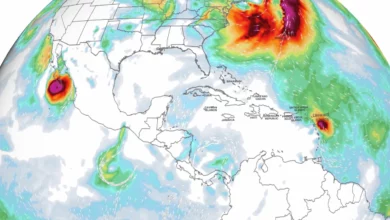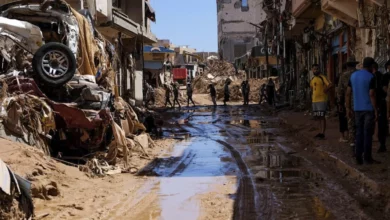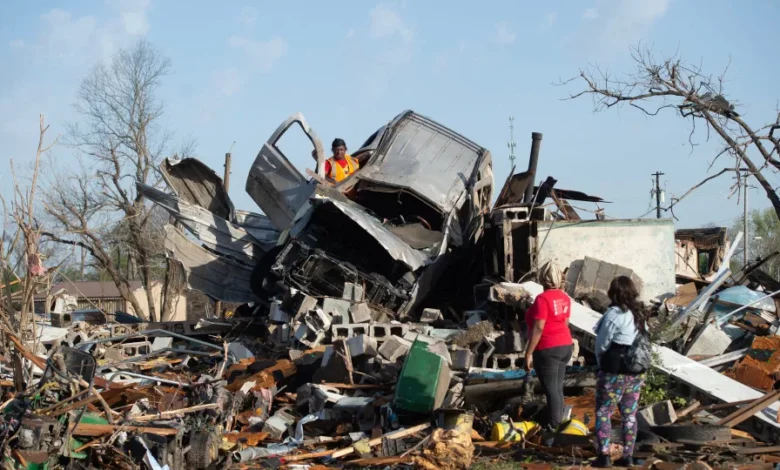
The last few weeks have consisted of a steady string of violent storms, dozens of deaths and entire towns left in ruins.
There have been 494 tornado reports so far in 2023 – nearly double the average at this point in the year. Many of these storms have occurred outside “Tornado Alley,” which includes states across the Plains, but instead have carved miles of destruction across the Southeast and Midwest.
A deadly EF-4 tornado ripped through the town of Rolling Fork, Mississippi, on March 24, killing at least 26 people and injuring dozens more. One week later, another round of deadly storms ravaged neighborhoods in Little Rock and Wynne, Arkansas, killing at least 32 more people and leaving many more homeless.
Then the third round of deadly storms in less than two weeks hit the very same region on Tuesday, spawning nearly two dozen tornadoes, which killed at least five people in Missouri.
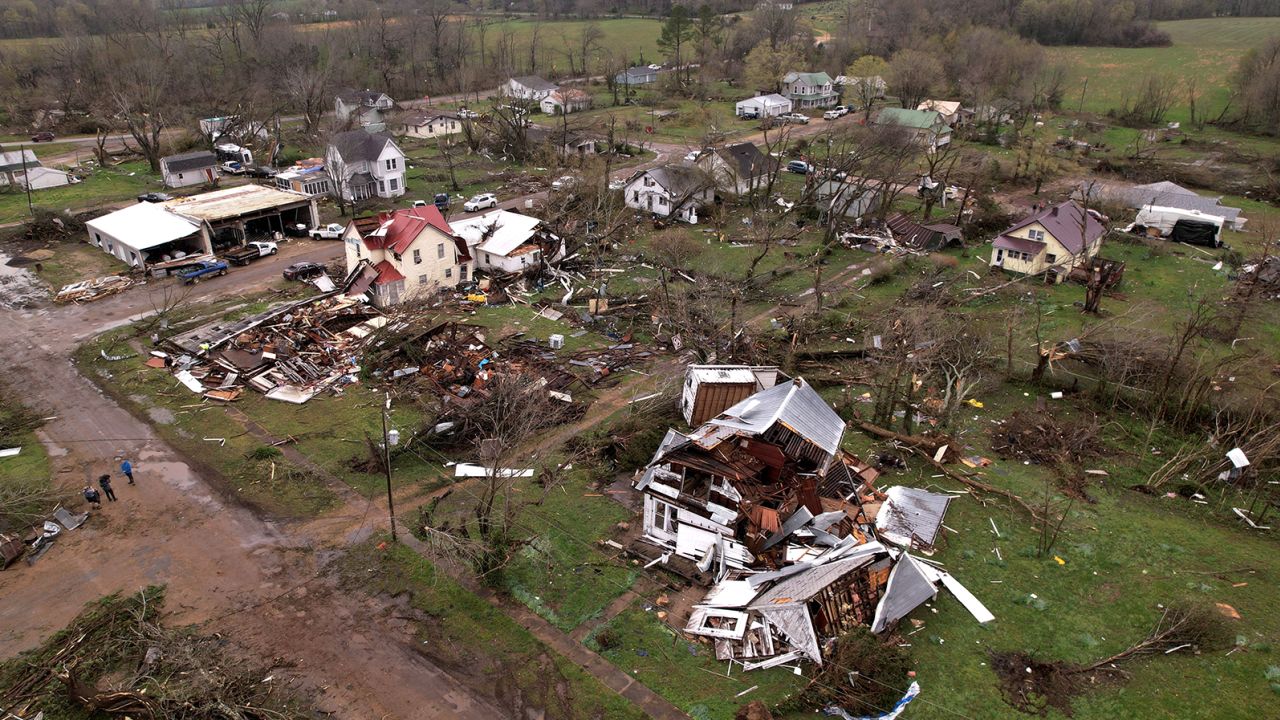
The numbers have been mind-blowing, yet severe weather season is far from over.
Severe weather season is becoming more deadly
There have already been at least 68 fatalities from severe storms in just over three months into 2023. This number is staggering, considering the average number of tornado deaths we see in an entire year is 71.
One reason this year has been so deadly is because many of these storms have swept through at night.
Research shows nighttime tornadoes are more than twice as deadly as tornadoes that occur in the daylight. Tornadoes are difficult to spot in the darkness, but the biggest reason is because people are sleeping.
“A breakdown in warning dissemination appears to coincide with the overnight hours as most people are asleep during this period and fail to receive critical warning information,” the study suggests.
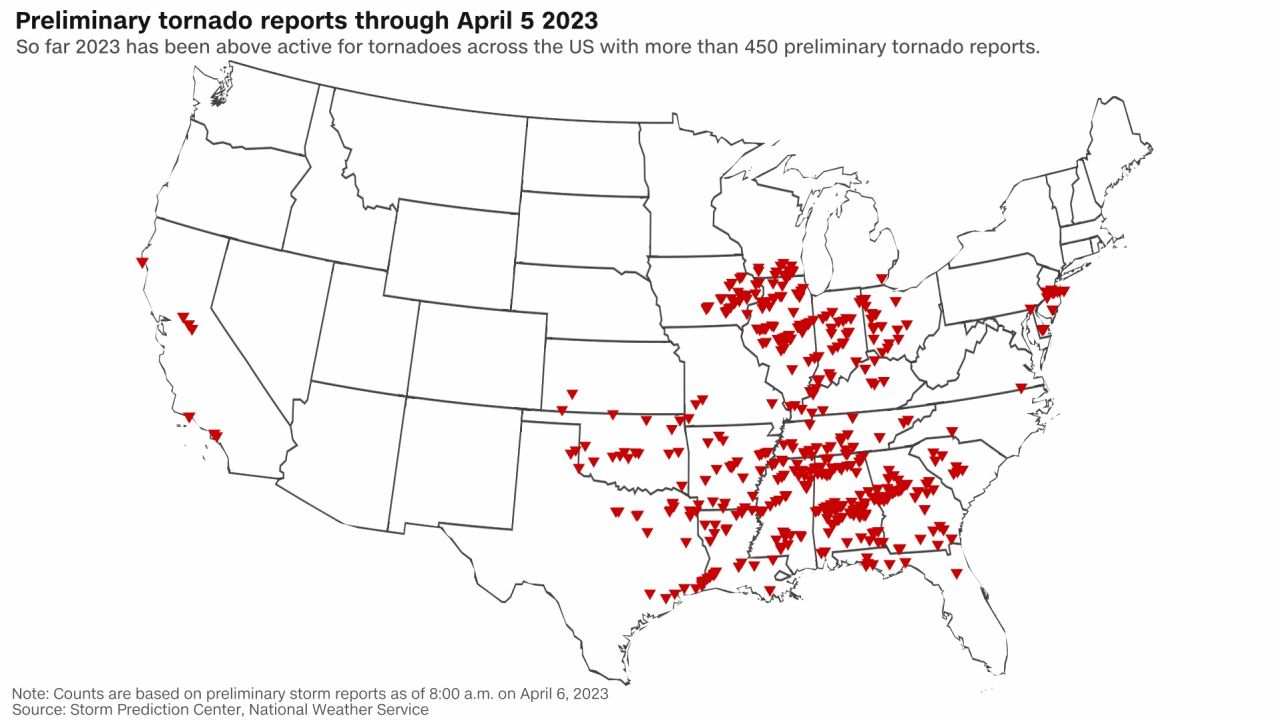
Another reason we have seen more deaths simply has to do with where these storms are occurring. The Southeast and Midwest are much more densely populated than the Plains. More people have been in the path of these storms.
There also tend to be fewer basements and underground shelters in the Southeast because of the moist soil, which forces people to seek shelter above ground, making it more difficult to survive a violent tornado.
Why this year has been particularly active
There have been nearly 500 tornadoes so far in 2023, making it the third-highest tornado year behind 2008 and 2017, year-to-date. And 13 of the 15 weeks this year have brought severe weather.
Part of why this year has been so relentless is because of the steady stream of atmospheric rivers that have plagued the West.
Those storms have held an incredible amount of moisture, with “lots of snow, lots of rain and tornadoes in Los Angeles,” said Bill Bunting, the chief of forecast operations at the Storm Prediction Center. And they have maintained their intensity has they have tracked east.
“These very strong wind fields, very strong surface cyclones developing can contribute to heightened severe weather potential as those systems get farther east,” Bunting said.
Winter was also warm across a large swath of the Eastern US, resulting in fewer cold fronts. Colder air tends to keep severe weather at bay since storms need warm air and moisture to thrive. With a warmer winter season, more ingredients were in place to create strong storms outside of the traditional severe season.
The traditional peak for severe storms across the US is April, May and June.
While storm fatigue might be setting in, this is the time of year when the most tornadoes typically occur, and the weather will most likely stay active for the next two months.
Tornado watch vs tornado warning
Climate change and tornadoes
Researchers have seen a shift in tornadoes in recent years. “Tornado Alley” is seeing a decrease in tornado activity, while the Southeast and Midwest are seeing an increase.
Tornado watches are on the rise across the South, with counties in Mississippi seeing the highest increase over the last 20 years, according to the Storm Prediction Center.
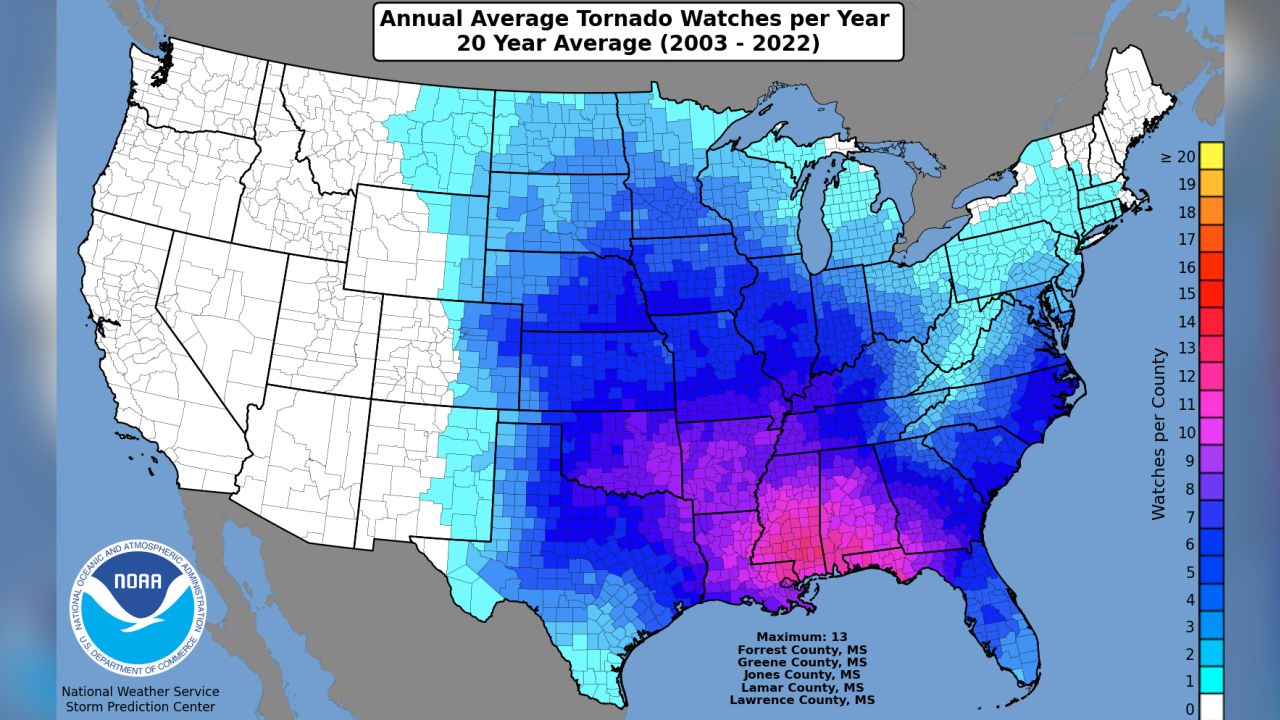
Until now, there has been very little evidence on how climate change could affect severe storms and tornadoes. But a recent study showed that rotating, supercell thunderstorms could be more frequent and intense in the future as planet-warming pollution continues to drive global temperatures higher.
It also suggests a shift in where these devastating storms will occur, as well as an earlier start to tornado season.
“Supercells are projected to become more numerous in regions of the eastern United States, while decreasing in frequency in portions of the Great Plains,” the study says. “Supercell risk is expected to escalate outside the traditional severe storm season, with supercells and their perils likely to increase in late winter and early spring months.”
As the outlook on severe weather looks grim, the best thing to do is to stay vigilant and be prepared. Having a plan now and knowing what to do could save your life when severe weather strikes.

